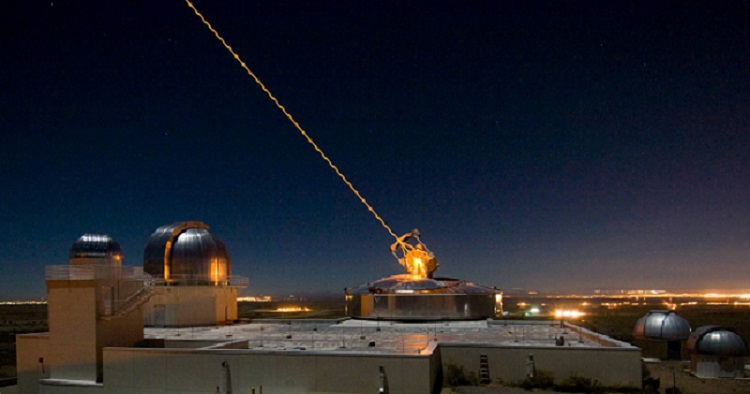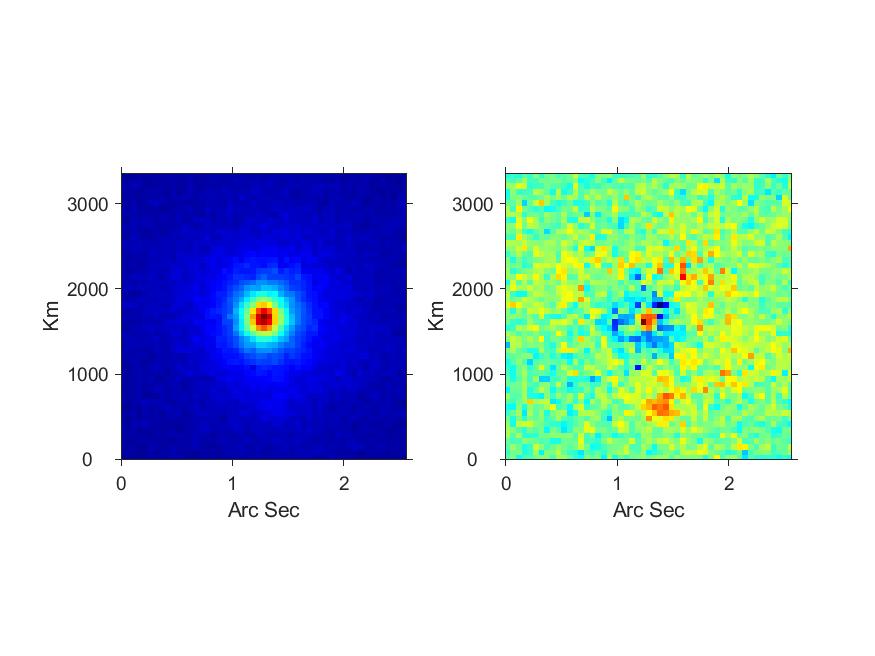KIRTLAND AIR FORCE BASE, N.M., Jan. 6, 2022 — A 1.5-m Starfire Optical Range (SOR) telescope at Kirtland Air Force Base recorded an image of asteroid Kalliope and its moon Linus, making it the smallest telescope to date to image and follow an asteroid and its natural satellite over months, the Air Force Research Laboratory reported.
Asteroids appear faint, even with the large 8- to 10-m telescopes housed in mountaintop observatories in Hawaii and Chile typically used to image them. Their large size enables them to capture more light, and therefore brighter images.

The Air Force Research Laboratory’s 3.5-m telescope at Kirtland Air Force Base, N.M., uses its laser to produce a guide star for a reference for adaptive optics, and previously held the record for the smallest telescope to image an asteroid’s satellite. The larger of the two domes to its left houses the 1.5-m telescope, which now holds the record, without using a laser. Courtesy of Robert Fugate, U.S. Air Force.
However, the larger telescopes aren’t the only ones used to capture asteroids; the comparatively much smaller SOR 3.5-m telescope previously held the record for being the smallest telescope to image and track an asteroid and its moon over months. The telescope used adaptive optics (AO) and a sodium laser to produce a guide star as a reference to correct for atmospheric turbulence. The 1.5-m SOR telescope housed next door was able to achieve the same feat but without the guide star.
“It was tough closing the AO loop because Kalliope was so faint,” said Odell Reynolds, a senior engineer at the SOR. “We had to slow down the system correcting the wavefront, hoping that it would still keep up with the changing atmosphere.”

At left is an unprocessed image of the asteroid Kalliope with its satellite Linus, not easily visible. At right, after fitting Kalliope as a Lorentzian point spread function and subtracting the model, Linus shows up in the residuals as a bright spot below where Kalliope was before subtraction. Courtesy of Starfire Optical Range.
Kalliope resides in the main belt of asteroids between Mars and Jupiter and is about 161 km in diameter. Its moon Linus, one of two known to orbit Kalliope, was discovered in 2010 with the Keck 10-m telescope on Mauna Kea, Hawaii. Linus is about 34 km in diameter and orbits Kalliope at a distance of 1100 km in 3.6 days.
SOR astronomer Tanya Tavenner noted that Kalliope is 63× fainter than the naked eye limit, and Linus is 23× fainter than Kalliope. Linus was so faint next to Kalliope that Tavenner missed it the first time she reviewed the images.
“In the end, after fitting the dominant Kalliope as a Lorentzian point spread function, and then subtracting it, Linus just popped out,” Tavenner said.
Mala Mateen, principal investigator for the Closely Spaced Object program at the SOR, sees potential for the accomplishment.
“This demonstrates that we can perhaps push high-contrast imaging to smaller telescopes in order to separate two close objects in space,” Mateen said.